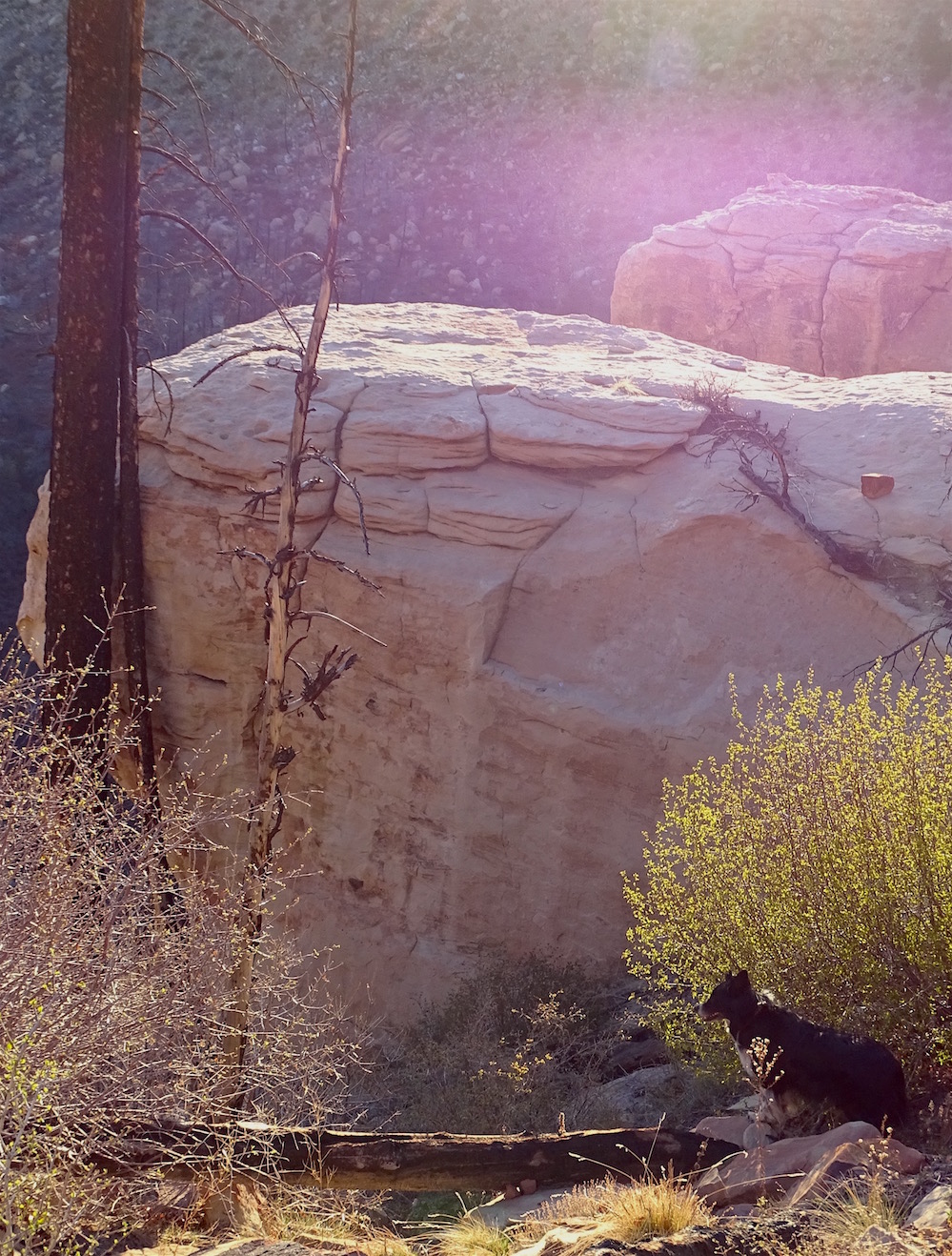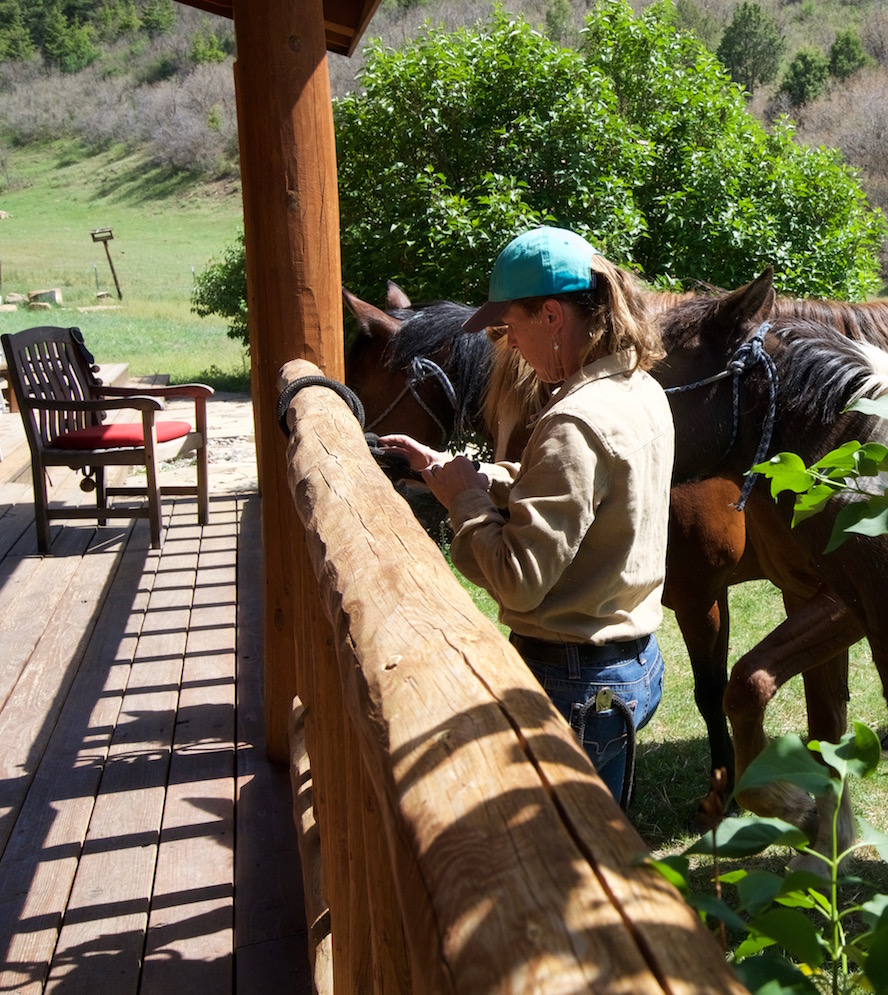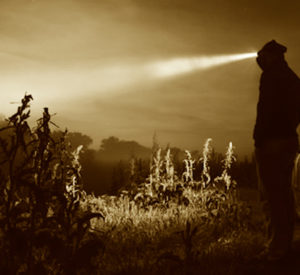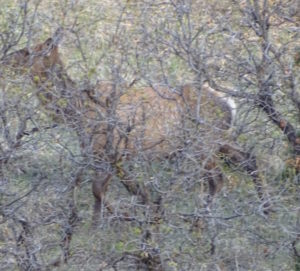 Are you a birder? Then you probably know that many flycatchers belong to the confusing group of birds in the Empidonax Complex. These birds are all small, muted in color, and quiet. The many species look alike and are distinguished only by subtle differences in markings, song, and region.
Are you a birder? Then you probably know that many flycatchers belong to the confusing group of birds in the Empidonax Complex. These birds are all small, muted in color, and quiet. The many species look alike and are distinguished only by subtle differences in markings, song, and region.
Not a birder? Then flycatchers all look the same and you probably wouldn’t notice them in a land of hawks, eagles, magpies, and ravens. But consider getting to know them. Like lots of small, quiet beings, they have stories to tell.
Two summers ago, a pair of them (and when I say “them” I mean a pair of Cordilleran Flycatchers in the Empidonax Complex) made a nest on the beam that runs the length of my porch. This is a porch for the front door and the porch on which I eat lunch or sit with a glass of beer, to read and watch the horses. This porch is also the launching pad for three extremely energetic dogs as we start hikes, walks, and rides.

Even “Leave No Trace” practices have impacts on my surroundings
Despite all the traffic and despite the rowdiness of the dogs, these flycatchers successfully raised four young ones. The nestlings lived on that beam for two weeks before flying off and continuing their life. This summer, the flycatchers, perhaps the same pair, built a new nest on the porch beam and started raising a new family.
It happened that when these nestlings were about 10 days old, several guys were at our place working on fencing. One evening, we were gathered around, admiring the fence work, and talking about cows and horses.
There was:
Jay, the boss, who is also a local rancher
Cody and Bronco, who work for Jay and also raise cattle
Oscar, who works for Jay and emigrated from a small town like our town of Mancos, he told me, in southern Mexico.
In the middle of this gathering, Cody noticed that my dog had something in his mouth. He called him over and took from his mouth a baby bird. Cody gently handed it to Oscar and Oscar handed it to me. I recognized it as one of the babies from the porch; it had a yellow beak, was grey-green in color, and had un-sprouted tail feathers.
It weighed as much as those eraser heads you put on the end of a pencil. Or, as much as a shoelace. Or, a damp ball of cotton. It was light and helpless but alive and amazingly unhurt.

The busy porch
I held it delicately in my hand and took it inside. My mom was a licensed wildlife rehabilitator. When I was a kid, she’d be called to take in injured birds. Owls, ospreys. It was normal to have road kill in the freezer. Some were small, like what I now had in my hand. Like I’d seen my mom do, I stirred up a glass of sugar water. Lacking a dropper, I dipped my finger into the liquid and touched it to the bird’s beak. It took several swallows and blinked. It seemed a bit revived.
I got a step stool and placed the bird near the nest on the beam, next to its siblings (who watched me and thankfully stayed put).
What a crazy sequence of events for this tiny, young bird:
- Leaving the nest.
- Getting eaten by a dog. But, wait, not eaten, just held in a wet, hot, jostling mouth.
- Pried from this mouth into a hand, then another hand, then another hand.
- Imbibing a strange liquid before being placed back where it could see and hear its siblings.
Did the bird know it dodged death? Was it just another day in a life? How will it remember this crazy encounter with strangers? Did it even consider us strangers?
When I was 10, my mom put me on a plane from Portland, Maine to Cleveland, Ohio, so I could visit my grandmother. I think she was a bit anxious about it. Strangers and all. She suggested that if people talk with me that I could make a game of finding out more about them than they did about me. Ask more questions than you answer, was how she put it.

Are we limited by the beam we project?
I’m quite sure she did not intend that this game, this new sport as I saw it, to make strangers more intriguing. It made strangers less strange and I like to think it kickstarted a career of asking questions of total strangers (I started a journalism career 10 years later).
The strategy helped me to walk in the world without a headlamp, figuratively speaking. When you walk with a headlamp, you only see what’s in this projected, deliberate beam. Walks and life. They are more enlightening without headlamps.
Cody, the rancher whose livelihood revolves around the inevitability of killing animals, was the one who noticed my dogs’ find and carefully extracted it.
Even the most dedicated outdoor recreationalists can be far less in tune with their surroundings than the everyday farmer.
 Practically speaking, I also walk without a headlamp. I live on a four-mile road that runs north-south down the middle of a canyon. The ridges rise about 800 feet to the east and west. There aren’t many people on this road, but there are lots of animals. Every day, I try to listen, observe, and have come to expect unexpected encounters. Even if I am observant, I know animals see me much more than I see them. I’m part zillions of encounters that I never know about. Some, if not all, have meaning or consequences.
Practically speaking, I also walk without a headlamp. I live on a four-mile road that runs north-south down the middle of a canyon. The ridges rise about 800 feet to the east and west. There aren’t many people on this road, but there are lots of animals. Every day, I try to listen, observe, and have come to expect unexpected encounters. Even if I am observant, I know animals see me much more than I see them. I’m part zillions of encounters that I never know about. Some, if not all, have meaning or consequences.
Back to the Baby Bird: The next morning, it was in the lilac bush beside the porch. Like its siblings in the nest, it was getting regular deliveries of food from its parents.
The next day, it was perched on the wheelbarrow The next day, it was back in the lilacs. And then, it was gone. But I know the family was still around. I could hear the babies chirping for food and I could hear the parents responding.
Eventually, though, the family kind of evaporated into the greater bird scape. That baby bird, I figure, was one of thousands of baby birds raised in the canyon over the summer. I had an impact on this bird’s life. But, shoot, it impacted me, too. It gave me pause, brought me to the page and eventually connected me to you.